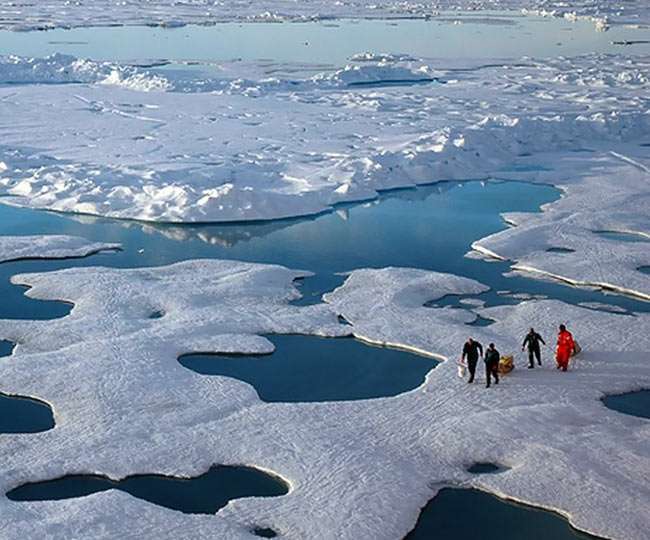
After ‘Okjokull’, now the crisis hovers over the Greenland glacier, the existence of Salamanders in danger

Washington, Agency. Rapid melting of glaciers and glaciers has become a concern worldwide. Glaciers are being destroyed due to climate change.
More recently, the glacier ‘Okjökull’, located on the west of the island of North-Western Europe, due to climate change, completely melted. Now similar bad news has surfaced about the Greenland Glacier.
Pictures released by the US Space Agency NASA reveal that up to 90 percent of the ice in most places in the Greenland glacier has been lost.
The end was 55 billion tonnes of ice,
according to NASA, a Helium glacier of the large glaciers of Greenland (Helheim Glacier) is approximately 7.5 kilometers less ice. Similarly, Midgard Glacier has also become snow-less within a radius of about 16 km.
According to the National Snow and Ice Data Center, between July 30 and August 2, 55 billion tons of ice have melted into the sea.
The change in grasslands has
revealed in a new study that climate change is having a wide impact on the earth as well as in rivers, springs and trees. The grasslands around the world are changing due to climate change.
Research says that carbon dioxide levels are rising due to climate change, due to which the temperature is constantly increasing. Drought conditions are also increasing as a result.
Changing plant species
According to a study by researchers at Michigan University in the US, climate change has occurred in 105 grasslands worldwide due to climate change.
The number of plant species found in grassland remains the same, but they have changed considerably.
According to the study published in the journal ‘Proceedings of the National Academy of Sciences’, the impact of climate change was so widespread that all species of plants have changed in some grasslands.
The threat to Salamander Population Apart from this,
another study has claimed that the change in the streams of rivers due to climate change is threatening the survival of the salamander.
According to a study published in the journal Proceedings of the National Academy of Sciences, salamanders may be on the verge of extinction due to changes in the flow of rivers.
A study of salamanders living near five water streams in Hampshire, England, by a team of Professor Winsor Lowe of Michigan University in the United States found that salamander populations have declined by 50 percent since 1999.


